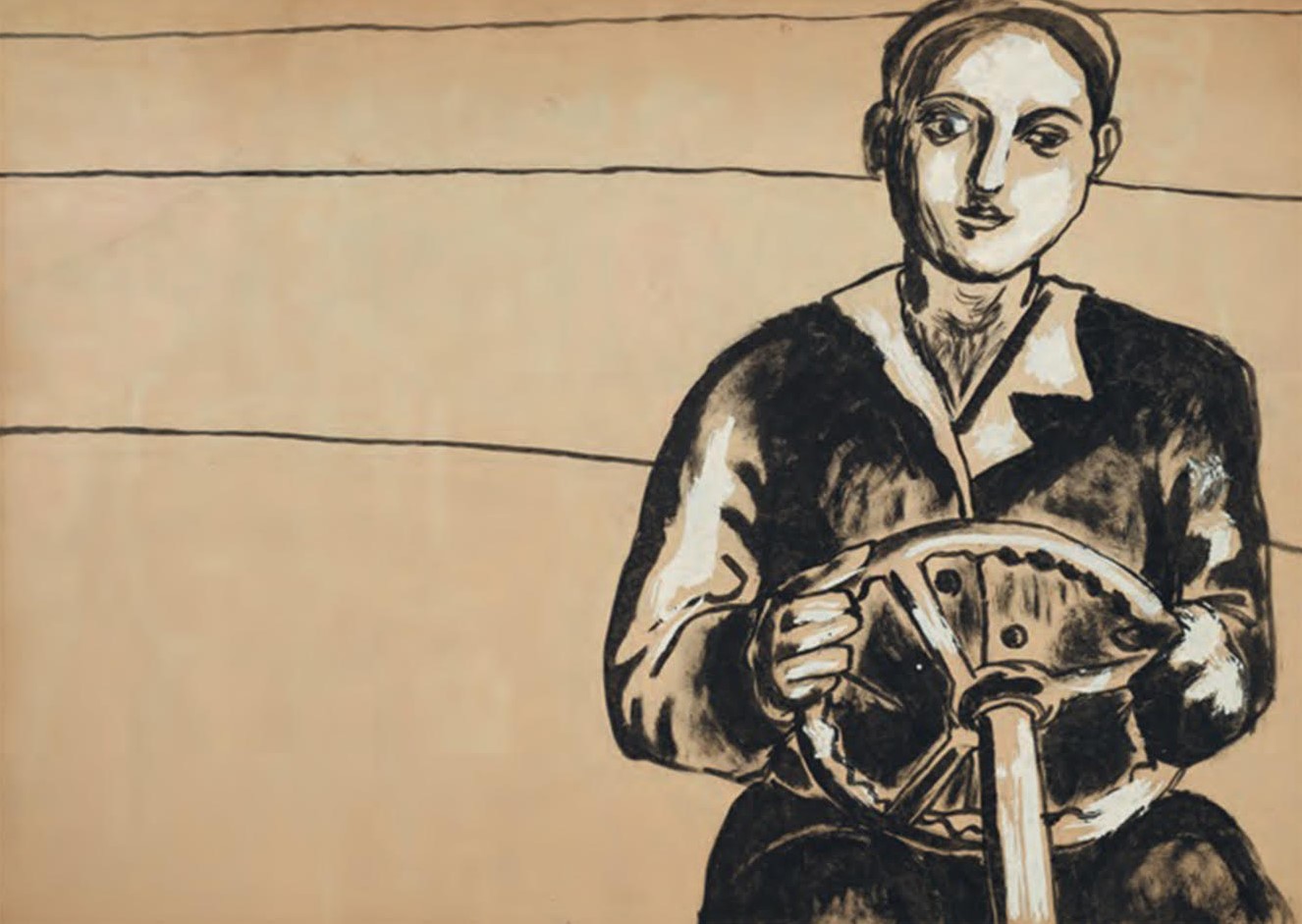Andrzej Wróblewski
CHAUFFEUR
Wróbleski left behind a courageous, revolu- tionary and bold legacy created over a mere period of eight years including undeniable monuments of Polish contemporary art rep- resented by series such as Executions, Chauf- feurs, Queues, Chaired, Tombstones. Togeth- er they constitute a nearly monumental image of an artist overtaken by post-cata- strophic and dystopic visions; the apologist of the light blue dead, whom he would soon be joining, full of doubts, explorations, de- feats and resurrections.
With the help of Andrzej Wajda, the artist’s first solo exhibition takes place at the Warsaw Klub Związku Literatów Polskich (Club of the Polish Writers’ Union) in 1956. It presents 36 works on paper, including illustrations for Hills by Guillaume Apollinaire (1880–1918), one of the fathers of modern poetry and a prominent art critic. The artist takes another thread out of his reflection on the poem – it will become the motif of another famous series of Chauffeurs ([Szofer] [Chauffeur], 1948/49, Starak Collection; (Autobus zimą) (Bus in the Winter), Starak Collection; Szofer niebieski (Blue Chauffeur), 1948, private col- lection). Surprisingly enough, the first paint- ings in the series are created at the begin- ning of Wróblewski’s artistic journey around 1948; having abandoned the motif for many years, he returns to it in 1956. In the paint- ings we can see a lone driver, sometimes with his front, sometimes with his back to us. While the figure itself is painted realistically, the background remains a composition of geometric abstraction. Yet another metaphor for the journey of life in the artist’s oeuvre. Relentless and undaunted, we live our lives “still looking ahead”, believing in the divine or primordial logos. Only sometimes, out of necessity or to anticipate danger, we look around nervously like a chauffeur checking the mirrors. A futile effort. The specter of the “dead point” looms over us all.





